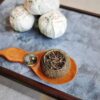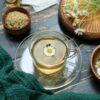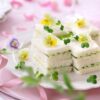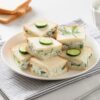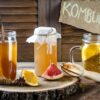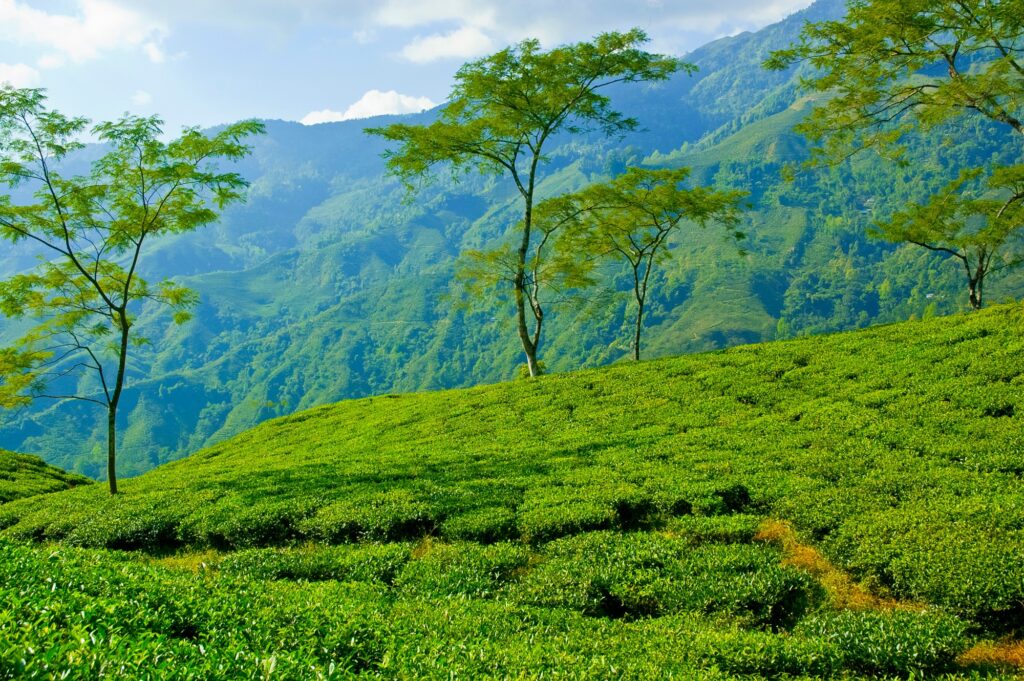
Welcome to the ultimate guide to Darjeeling tea, where we will take you on a journey to explore the origins, flavors, and health benefits of this renowned tea variety. Known as the “Champagne of Teas,” Darjeeling tea is famous for its delicate aroma, distinct flavors, and rich history.
Nestled in the breathtaking Himalayan foothills of India, Darjeeling is a region that produces some of the finest teas in the world. Its unique combination of altitude, soil, and weather conditions lends to the creation of teas with exquisite taste profiles that are beloved by tea enthusiasts worldwide.
The history and origins of Darjeeling tea
Darjeeling tea has a fascinating history that dates back to the colonial era. It all began in the early 19th century when the British established tea gardens in the Darjeeling region of India. The cool climate and high altitude of the Himalayan foothills proved to be ideal for tea cultivation, and soon Darjeeling tea gained recognition for its exceptional quality.
The first tea garden in Darjeeling, known as Tukvar, was established in 1856. It was followed by several others, including Steinthal, Alubari, and Thurbo. The tea produced in these gardens quickly gained popularity in England, and Darjeeling tea became a favorite among the British elite.
Darjeeling tea’s unique flavor profile can be attributed to its terroir, which refers to the combination of soil, climate, and altitude in which the tea is grown. The region’s misty weather, abundant rainfall, and well-drained soil contribute to the development of the tea’s distinct aroma and taste.
The unique flavors and characteristics of Darjeeling tea
Darjeeling tea is renowned for its delicate and complex flavors. The tea leaves are hand-plucked, ensuring that only the finest leaves are selected for production. This meticulous process results in a tea with a nuanced flavor profile that is often described as muscatel, floral, and fruity.
The flavor of Darjeeling tea can vary depending on the time of year it is harvested. The first flush, which is harvested in early spring, is known for its light and floral notes. The second flush, harvested in late spring or early summer, is characterized by its muscatel flavor, reminiscent of ripe grapes. The autumn flush, harvested in the fall, has a mellow and earthy taste.
In addition to its distinctive flavors, Darjeeling tea also boasts a lovely golden color and a fragrant aroma that is often compared to that of a blooming garden. These sensory qualities make Darjeeling tea a delight to the senses and a favorite among tea connoisseurs.
The different types of Darjeeling tea
Darjeeling tea is available in various types, each offering a unique taste experience. The most common types of Darjeeling tea include black, green, white, and oolong.
Black Darjeeling tea is the most widely consumed variety and is known for its robust flavor. It undergoes a withering and oxidation process, which gives it its distinctive dark color and strong taste. Black Darjeeling tea can be enjoyed plain or with a splash of milk and sugar.
Green Darjeeling tea, on the other hand, is unoxidized and has a lighter and more vegetal taste compared to its black counterpart. It is rich in antioxidants and is often brewed at a lower temperature to preserve its delicate flavors.
White Darjeeling tea is the least processed of all the varieties and is made from the youngest leaves and buds. It has a delicate and subtle flavor, with a slightly sweet and floral taste. White Darjeeling tea is often regarded as a rare and luxurious tea due to its limited production.
Oolong Darjeeling tea falls between black and green tea in terms of oxidation levels. It offers a complex flavor profile that ranges from floral and fruity to toasty and nutty. Oolong Darjeeling tea is highly prized for its balanced taste and is a favorite among tea enthusiasts.
The health benefits of drinking Darjeeling tea
In addition to its delightful taste, Darjeeling tea also offers numerous health benefits. Like other types of tea, Darjeeling tea is rich in antioxidants, which help protect the body against free radicals and reduce the risk of chronic diseases.
The high antioxidant content in Darjeeling tea has been linked to various health benefits, including improved heart health. Studies have shown that regular consumption of black and green teas, such as Darjeeling tea, may help lower cholesterol levels and reduce the risk of heart disease.
Darjeeling tea is also believed to aid in weight loss. It contains compounds that can help boost metabolism and increase fat oxidation, making it a popular choice for those looking to shed a few pounds. Additionally, the caffeine content in Darjeeling tea can provide an energy boost and enhance focus and alertness.
Moreover, Darjeeling tea is known for its calming properties and is often enjoyed as a natural stress reliever. The combination of its aroma and the ritual of brewing and sipping tea can help promote relaxation and mindfulness.
How to brew the perfect cup of Darjeeling tea
Brewing Darjeeling tea requires some attention to detail to ensure the best flavor and aroma. Here’s a step-by-step guide to brewing the perfect cup of Darjeeling tea:
- Start with fresh, cold water. Avoid using water that has been previously boiled or has been sitting for too long, as it can affect the taste of the tea.
- Heat the water to the recommended temperature based on the type of Darjeeling tea you are brewing. For black tea, use water that is just below boiling point (around 95°C or 203°F). For green and white teas, use water that is slightly cooler (around 80-85°C or 176-185°F).
- Measure the appropriate amount of tea leaves based on the desired strength of the brew. As a general guideline, use 1 teaspoon of tea leaves per cup of water.
- Place the tea leaves in a teapot or infuser and pour the hot water over them.
- Let the tea steep for the recommended time. For black Darjeeling tea, steep for 3-5 minutes. For green and white teas, steep for 2-3 minutes.
- Once the desired steeping time is reached, strain the tea leaves and pour the brewed tea into cups.
- Enjoy your cup of Darjeeling tea as is or add milk, sugar, or lemon according to your preference.
Where to buy authentic Darjeeling tea
When it comes to purchasing authentic Darjeeling tea, it is essential to buy from trusted sources to ensure the quality and authenticity of the tea. Here are a few places where you can find authentic Darjeeling tea:
- Online retailers specializing in high-quality teas: Many online stores offer a wide range of Darjeeling teas, sourced directly from the tea gardens in Darjeeling. Look for reputable sellers with good customer reviews.
- Specialty tea shops: Local tea shops that specialize in premium teas often carry Darjeeling tea. These shops may offer a variety of Darjeeling teas, allowing you to explore different flavors and types.
- Tea auctions: Darjeeling tea auctions are held regularly, and some auction houses offer the opportunity to purchase teas directly from the gardens. However, this option may be more suitable for bulk buyers or those looking to establish a tea business.
When purchasing Darjeeling tea, be sure to check for the “Darjeeling” logo or certification mark on the packaging. This ensures that the tea has been grown and processed in the Darjeeling region and meets the quality standards set by the Tea Board of India.
Darjeeling tea tourism
For tea enthusiasts and travelers alike, a visit to the Darjeeling region offers a unique opportunity to explore the tea gardens and immerse oneself in the world of Darjeeling tea. The region is known for its scenic beauty, with lush tea plantations covering the rolling hills.
Many tea gardens in Darjeeling offer guided tours where visitors can learn about the tea production process, from plucking the leaves to processing and packaging. These tours often include tea tasting sessions, allowing visitors to sample different varieties and experience the flavors firsthand.
During the tea tasting sessions, experts guide participants through the tasting process, highlighting the nuances and characteristics of each tea. It is a chance to appreciate the complexity of Darjeeling tea and gain a deeper understanding of its flavors and aromas.
In addition to the tea gardens, Darjeeling also boasts charming tea houses and tea boutiques where visitors can enjoy a cup of freshly brewed Darjeeling tea or purchase tea to take home. These establishments often have knowledgeable staff who can provide guidance on choosing the right tea based on individual preferences.
Popular Darjeeling tea blends and recipes
While Darjeeling tea is exquisite on its own, it is also commonly used as a base for various tea blends and recipes. Here are a few popular Darjeeling tea blends and recipes to try:
- Earl Grey Darjeeling: A twist on the classic Earl Grey, this blend combines Darjeeling tea with bergamot oil for a fragrant and citrusy flavor.
- Masala Chai with Darjeeling: Add Darjeeling tea to a traditional Indian masala chai recipe for a lighter and more delicate version of this spiced tea.
- Darjeeling iced tea: Brew a strong batch of Darjeeling tea, let it cool, and serve over ice with a squeeze of lemon or a sprig of mint for a refreshing summer drink.
- Darjeeling tea-infused desserts: Darjeeling tea can be used to infuse flavor into various desserts, such as ice creams, cakes, and custards. The floral and fruity notes of the tea add a unique twist to these sweet treats.
Feel free to experiment and get creative with Darjeeling tea in your own kitchen. Its versatility makes it a wonderful ingredient to incorporate into different culinary creations.
The enduring charm of Darjeeling tea
As we conclude our journey through the world of Darjeeling tea, we hope you have gained a deeper appreciation for this remarkable tea variety. From its rich history and unique flavors to its numerous health benefits, Darjeeling tea truly deserves its reputation as the “Champagne of Teas.”
Whether you prefer the delicate floral notes of the first flush or the muscatel flavors of the second flush, Darjeeling tea offers an experience that is both soothing and invigorating. So, the next time you reach for a cup of tea, consider indulging in the elegance and charm of Darjeeling tea, and let it transport you to the misty hills of the Himalayas.
Now, go ahead and brew yourself a cup of Darjeeling tea, savor its flavors, and embark on your own journey of exploration and enjoyment. Cheers to the magic of Darjeeling tea!

